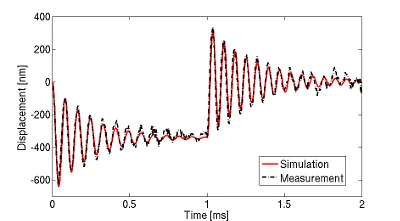Microsystems
Physics-based modeling, numerical simulation, design and characterization of microsystems
Even if we do not see them, microsystems are already a key presence in our daily lives and their application in technical systems increases continuously. More and more advancing and maturing fabrication technologies enable the design of devices and systems with increasing performance, growing functionalities and smaller feature sizes. The technological trend aims towards multi-functional, highly integrated compact and, eventually, autonomous sensor and actuator systems.
Microsystems or microelectromechanical systems (MEMS) generally consist of transducers (sensors, actuators) and electronic circuitry, hence combining pure electrical with non-electrical, e.g., mechanical, fluidic, or chemical functionalities. By their nature, MEMS exhibit a much higher complextiy than pure electronic systems w.r.t. the inherent multi-energy domain-coupling. MEMS often shows more sophisticated geometries, a varity of different implementations and technological fabrication processes compared to electronic devices.
Due of their complexity, the development of such systems requires efficient, but yet physics-based modeling techniques to support the design and optimization by predictive numerical simulation. The hierarchical modeling approach pursued at the TEP comprises in this respect amongst other:
- Multi-physics modeling on device-level (e.g., Finite Elements, Finite Volumes)
- System-level and compact modeling of microsystems by generalized Kirchhoffian networks
- Compact model library for specific classes of devices and systems (coded in hardware description language)
- Optimization of microsystems by numerical methods (e.g. evolutionary algorithms)
- Simulation tools and modeling expertise at several levels of abstraction (e.g., Comsol Multiphysics, ANSYS, Spectre, Simetrix, Matlab/Simulink, Coventor MP)
For model validation and parameter extraction as well as for characterization of teststructures and prototypes various optical and electrical measurement equipment are available.
Current and past projects deal with the design of novel sensor and actuator concepts, modeling methods of coupled physical phenomena and assessment of mechanical reliability and robustness.

